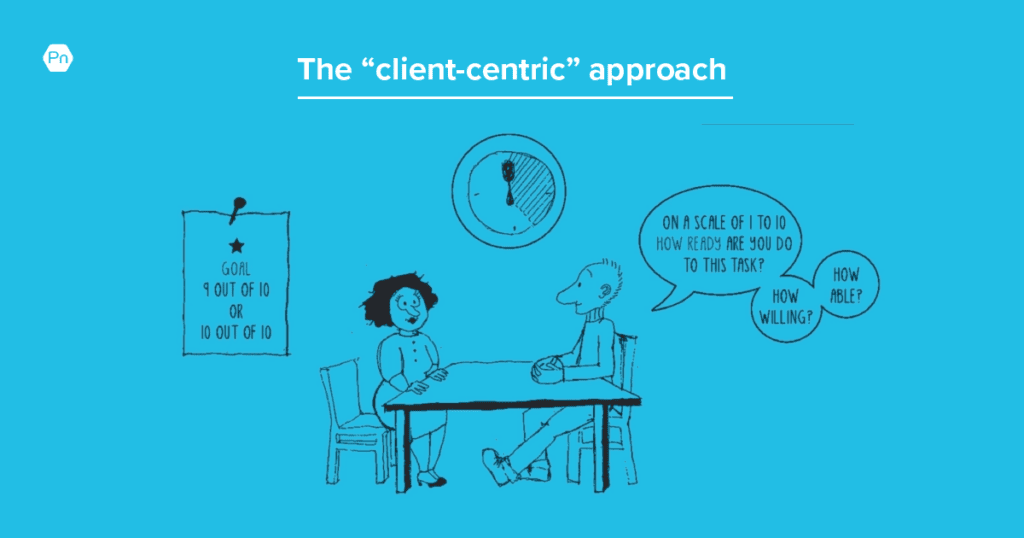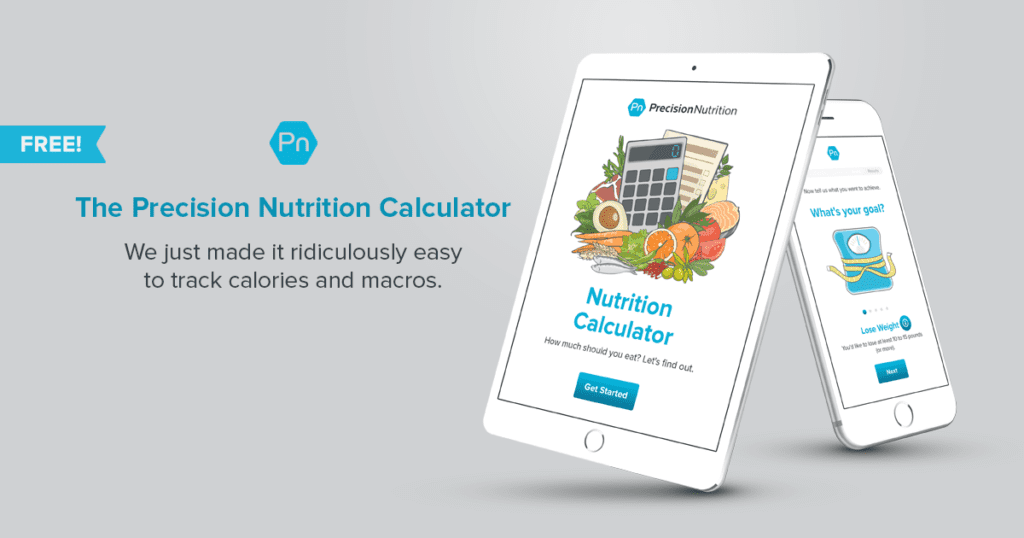Quick, grab a shovel.
Start digging a hole.
Dig, dig, dig.
The hole serves no purpose. You’re not burying a time capsule or planting a tree. You’re just… digging.
It’s hard work. You’re sweating, mopping your brow. It’s difficult work. And it sorta feels productive.
But in truth, you’re shoveling to nowhere.
At PN, “shoveling to nowhere” has become shorthand for the kinds of behaviors that are uncomfortable or unpleasant, but don’t ultimately serve your health and fitness goals.
We’ve all got our own version of “shoveling to nowhere.” Maybe it’s:
- Repeatedly crushing yourself in the gym until you’re exhausted—and injured.
- Crash-dieting, and then gaining all the weight back. Again.
- Stress-eating until you’re uncomfortably stuffed… and feeling even worse than before you started.
- Avoiding exercise because “you’re not a gym person”… even though you feel creaky, stiff, and sluggish.
- Refusing to try medication for your chronic anxiety—because you take pride in being prescription-free.
- Dodging difficult conversations or asserting your needs because it’s easier to keep the peace.
- Trying to do it all, without asking for help, to prove that you’re the person who’s got it all together.
In these situations, you (or your client) might be working hard. You might be enduring. But you’re not necessarily growing.
Sound familiar?
We call this type of discomfort “difficult-easy.” Yes, it’s a weird term (and, as oxymorons go, not as good as “working vacation” and “airline food.”)
But determining your difficult-easy can help you figure out… wait for it… your “difficult-difficult.” And THAT’S one of the best-kept health and fitness secrets for kickstarting progress and making lasting change.
We’ll show you how, complete with a 14-day challenge.
Let’s start with “difficult-easy.”
“Difficult-easy” is the uncomfortable stuff you do on autopilot, even though it doesn’t get you closer to your goals.
These behaviors might not feel “easy.” They might even feel awful.
But they’re also familiar. They feel safe. Status quo.
It’s not that “difficult-easy” behaviors are totally useless: Like all behavior, they serve a purpose. In fact, they may have been valuable, even necessary, at another time in your life.
Maybe staying quiet and passive helped you avoid conflict growing up as a child in a volatile household.
Maybe as a young adult, pushing yourself to your limits helped you thrive.
Maybe working 24/7 gave you a sense of control during the pandemic.
But as we evolve and age, sometimes we outgrow the behaviors and strategies we once found useful.
Behaviors that were once purposeful are now “difficult-easy”: familiar patterns that no longer serve you.
On the other hand, some discomfort—the kind that gets us out of our comfort zone—can be positively life-changing.
We call this type of discomfort “difficult-difficult.”
“Difficult-difficult” refers to the stuff that feels uncomfortable (maybe really uncomfortable), but ultimately helps you grow.
Notably, a task doesn’t have to be hard or complex in order to be uncomfortable.
Sometimes the simplest things are the hardest ones, like:
- Walking into a gym for the first time, despite feeling intimidated or self-conscious.
- Eating carrots and watermelon after years of avoiding them because we were “worried about the carbs.”
- Practicing self-compassion in place of self-criticism.
- Taking a recovery day instead of doing another punishing workout.
- Eating to 80 percent full when you’re used to overeating at every meal.
Discomfort is deeply personal.
Some folks need to dig deep just to step foot in the gym, while others have to be practically peeled off the treadmill.
To be clear: Difficult-difficult (just like difficult-easy) is less about the behavior itself and more about whether or not it serves you.
There’s no universal list about what “counts” as difficult-difficult or difficult-easy.
The point is simply to differentiate between behaviors that serve you, and those that don’t.
If you can tolerate more of the useful kind of discomfort—and less of the not-so-helpful kind—you grow.
So, how do you help folks (or yourself) get better at managing discomfort?
Here’s a simple two-step method called The Discomfort Deal. (Note: What follows is geared toward helping coaches guide clients, but you can absolutely apply these steps to yourself.)
Step 1. Have a conversation with your client (or yourself) about discomfort.
Introduce the concept of “difficult-difficult / difficult-easy” to your client. (You might even share this article with them.)
See how it resonates. For example:
- Can they identify any behaviors in their life that could be characterized as “difficult-difficult”?
- What about “difficult-easy”?
Caution: Sometimes conversations about difficult things are, well, difficult.
To ensure a productive conversation, here are a few tips from Jason Bonn, Precision Nutrition Level 2 Master Coach:
► Use the “Bingo Dab” method.
“Not all clients will be ready to have an open and honest conversation about the pain and discomfort in their life—particularly if they have addictive behaviors or coping mechanisms they’re not ready to disrupt,” says Bonn.
So, when initiating conversations about discomfort, Bonn recommends an approach called the “Bingo Dab” method.
“Aim to increase clients’ awareness of their behavior without threatening them or provoking their defense. When you sense you’ve touched a sore spot, simply observe, bingo dab it gently, and then back off.”
In practice, you might say something like:
“So what would happen if you didn’t have wine with dinner?… Oh, that bad, eh? Really helps?… Okay, we won’t worry about that right now.”
► Aim to build awareness, rather than force change.
You might be tempted to point out your clients’ “difficult-easy” behavior.
Work against that impulse.
Instead, gently nudge your client toward awareness.
“We’re not trying to finger-point or change behavior in these conversations,” says Bonn. “The point of teaching your client about difficult-difficult and difficult-easy is to help them become more aware of their behavior.”
“Once they have more awareness, they can decide whether a particular behavior is actually serving them or not,” he says. “And then, they can choose whether they want to change it or not.”
Interestingly, sometimes awareness is all we need in order to change a behavior. Helping a client see their behavior more clearly can be a powerful catalyst for change all on its own.
► Be flexible with the language you use.
Bonn notes that the “difficult-difficult / difficult-easy” phrasing doesn’t resonate with everyone, so feel free to mix it up.
A couple of alternatives to try:
- “discomfort that moves me towards my goals” vs. “discomfort that moves me away from my goals.”
- “discomfort in the service of growth” (or “discomfort that helps me grow,”) vs. “discomfort that doesn’t serve me” (or “discomfort that doesn’t help me grow”).
Use whatever works for your client.
Step 2. Try “The Discomfort Deal” for two weeks.
We already have everything we need to be able to tolerate discomfort. We just need to tap into our natural abilities.
And, like anything else, we can build those abilities through practice.
In our PN Coaching program, we give clients a two-week practice called “The Discomfort Deal.”
For this challenge, we ask them to commit to the following:
- When you feel discomfort, sit with it, in whatever form it takes, for 10 minutes. (Note: there’s nothing magical about 10 minutes. It’s all about what works for the client.)
- During that time, notice and name the discomfort as best you can.
- After that, make the choice you feel is appropriate. (There are no wrong answers here. You choose what to do. Just sit with the discomfort before taking any action.)
Remember, discomfort is personal.
Your client can apply this challenge to any kind of uncomfortable situation they face. For example:
- “It’s five o’clock and all I want to do is pour myself a glass of wine—even though I committed to breaking that habit.”
- “I’m exhausted and I know I should turn off the TV and get ready for bed—but I just want to keep binge-watching Netflix.”
- “I promised my wife I’d call the doctor and book an appointment—but I’d really rather wait and hope my symptoms go away.”
- “My physiotherapist told me to decrease my workout load this week—but the idea of training less makes me feel like a failure.”
- “I know going out with friends will boost my mood—but leaving the house triggers so much anxiety. Going past the front door feels scary.”
Ultimately, it’s your client’s choice whether they pour that glass of wine, or not. Turn off Netflix, or not. Call the doctor, or not. Train less, or not. Leave the house, or not.
Regardless of which decision they make, first they’ll sit with the discomfort. Simply be with it. See how it feels.
By practicing for 10 minutes a day for two weeks, our clients get stronger.
Their discomfort tolerance grows.
Furthermore, they’re better able to “notice and name” their discomfort for what it is. They can identify difficult-difficult and difficult-easy in their own life.
As a bonus, The Discomfort Deal might help your client improve certain habits.
For instance, if they wait for 10 minutes before cracking open that extra beer or pint of ice cream they might find they no longer need it.
But changing behavior isn’t the purpose of the discomfort deal. The real goal is to build discomfort tolerance.
When channeled appropriately, discomfort tolerance is like a superpower.
It allows you to embrace discomfort as an opportunity for growth.
To let go of the difficult-easy behaviors that don’t serve you.
And yes, to finally get comfortable with being uncomfortable.
If you’re a coach, or you want to be…
You can help people build sustainable nutrition and lifestyle habits that will significantly improve their physical and mental health—while you make a great living doing what you love. We'll show you how.
If you’d like to learn more, consider the PN Level 1 Nutrition Coaching Certification. (You can enroll now at a big discount.)




Share